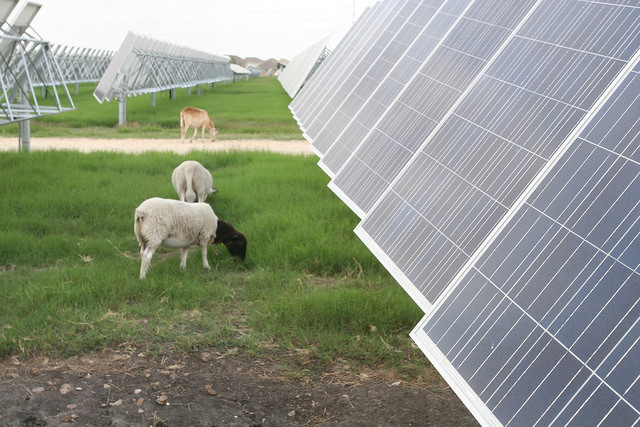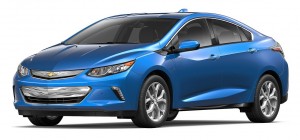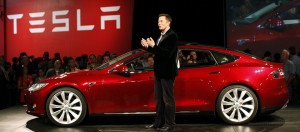Ditch coal, Buy Volts: A simple, Made in America plan to save the planet
Replace coal power generation with natural gas. Everyone drive Chevy Volt-style EVs. Ergo, the world consumes much less fossil fuels
In his initial remarks at the COP 21 conference in Paris, President Barack Obama said America embraces its responsibility to “do something” about climate change. In the spirit of helping out, I hereby submit my modest proposal for America to save the planet.
Let’s start with the G7 commitment to phase out fossil fuels by 2100, which I think is pretty ambitious, but the objective of my simple two-part plan is to do as much as we can with what we’ve got at hand. Think of it as MacGyvering climate change.
If the world is going to decarbonize in 85 years, let’s start with a simple fact: Not all fossil fuels are equal. What I’m trying to say is, coal is awful for the environment. Coal emits between 206 and 229 pounds of CO2 per million Btu, compared to 157 for gasoline and 117 for natural gas.
Plus, as anyone who has seen recent photos of the noxious soup that is Beijing air, coal contains all sorts of other harmful crap, like NOX, SOX, particulates, etc.
Therefore, the first priority is to ditch coal. Not only is it the worst fossil fuel, but we actually have a substitute: a combination of natural gas and renewable energies like wind and solar.
The natgas/wind/solar model is the driving force behind the Clean Power Plan, an Environmental Protection Agency initiative that is the centerpiece of Obama’s climate change agenda. The EPA estimates the Plan will reduce American power generation GHG emissions by 32 per cent by 2030.
Estimates from the US Energy Information Administration show that the big winner in the short-term will be natural gas, but renewables will be a bigger and rapidly growing part of the power generation picture in the medium to long-term.
American Petroleum Institute CEO Jack Gerard actually called on Obama to promote changing over from coal to natural gas at COP 21. Big Oil’s stamp of approval should lend the American model a certain amount of legitimacy with global decision makers because these are the companies with the capital, technology, and expertise to produce enough natgas to push out coal from global markets.
 Yes, vastly increasing gas production will require fracking, the controversial method of pumping pressuring fluid down a well to fracture shale formations and release crude oil and gas.
Yes, vastly increasing gas production will require fracking, the controversial method of pumping pressuring fluid down a well to fracture shale formations and release crude oil and gas.
Unfortunately, there are no perfect options. If we want to ditch coal, the compromise is natural gas, which when burned in combined cycle power plants has the added benefit of being able to nicely backstop intermittent wind and solar.
Let’s not allow the pursuit of perfection to be the enemy of good.
And keep in mind that China and India alone plan to build 1,617 new coal power plants by 2030 using ultra dirty 1950s-era technology, and that both countries have huge, mostly undeveloped shale deposits.
President Obama has the American model of natgas/wind/solar to offer as an alternative to more coal plants around the world and the clout of the American energy industry to help make it happen.
Now, does he have the courage to begin that process, keeping in mind that he leaves office in 13 months?
If he does, that gets us to the second part of my modest little plan to save the planet: Electric Vehicles.
More specifically, the Chevy Volt.
The poor Volt doesn’t get a fraction of the attention its sleeker, sexier, and (in Insane Mode) much more powerful competitor the Tesla Model S receives.
Who among us doesn’t believe Elon Musk’s creation – combined with his $5 billion Gigafactory – will one day rule global automaking?
Well, let’s think about that idea.
A 2014 Harvard study identified purchase price and range anxiety as the two biggest constraints to EV adoption.
The Tesla doesn’t end range anxiety, but at 275 to 300 miles per charge, the EV’s fancy management software for the not very revolutionary lithium-ion batteries of the Model S blow the doors off every other pure EV on the market.
Capital cost is still a problem, however. Beginning at $80,000USD, the Model S is out of the reach of everyone but wealthy buyers.
General Motors took a different approach to designing the Volt. Before setting to work, engineers first surveyed Americans about their commuting habits. Turns out the average commute was around 35 miles.
No surprise, then, the first generation Volt got 35 to 40 miles to a battery charge (second gen, introduced for the 2016 model year, gets 53). Commuters could pretty much commute round trip on a charge, but if they needed to drive further, the range extender engine allowed them to go as far as they wanted or needed to.
The Idaho National Laboratory recently completed a study of the charging habits of Volt and Nissan Leaf (a pure EV with an 84 mile range) owners. One of the most interesting conclusions is that Volt owners travel 80 per cent of their driving miles in EV mode.
One can find media stories about Volt drivers burning only a quarter of a tank of gasoline every month. Not much, but apparently enough to eliminate range anxiety.
Another study finding is that Volt owners mostly charge at home, about 87 per cent. The most favored away charging spot was work, followed in distant third was public chargers.
This finding suggests the Volt design does not need to be supported by huge charging infrastructure, such as the $1 billion project envisioned by California.
This point gets even more interesting when we consider a wireless charging product recently tested by the INL. Volt owners didn’t even have to leave their car to charge the battery. They simply pulled up to or over the transceiver and – Voila! – charging was initiated.
How long before wireless public chargers at malls or workplaces are linked to the Internet and can both recognize a specific Volt and charge the electricity to a credit card?
My point is not to suggest that the entire global fleet of 1.1 billion autos should be converted to Chevy Volts, as much as GM would love the business.
But it is fair to suggest that the Volt design is superior to that of Tesla, the Leaf, and other competitors. Priced in the mid-30,000s, the Volt is also much affordable (though still too expensive for the average consumer, given the Volt is basically the EV version of a Chevy Cruze).
Hypothetically, if everyone drove an EV designed like the Volt, we could eliminate 80 per cent of 75 per cent (transportation’s share of petroleum consumption) of crude oil use. Or something close to that amount once we removed jet fuel, etc.
Admittedly, skeptics will have a million objections to this plan. For instance, replacing the Btus from gasoline with electricity will require a huge build out of national power generation systems, and how will that be accomplished at the same time those systems are transitioning from coal to new fuels sources like natural gas, wind, solar? Seems like a recipe for instability and crisis, doesn’t it?
I leave those questions to engineers and scientists. Oh, and innovators like Bill Gates, who earlier this week launched a huge clean energy technology fund at COP 21.
But if the world is looking for a strategy, especially one that’s simple and uses readily available technology, global leaders could do much worse than this one, which has Made in America written all over it.
Ditch coal, buy Volts. A decarbonization mantra for the world, if it wants one.













This article builds from the elegant power of a four word slogan for changing the world: Ditch Coal, Buy Volts. For strength: length ratio, and breadth across the energy economy, that can’t be beat. In laying out the case to ditch coal and that plug in hybrid electric vehicles (“Volts”), the article is spot on.
It is in the unlabeled middle of the slogan — the void of what fuel will power the Volts — that I feel the author’s otherwise crystal clarity has been led clouded by the influence of the petroleum industry. Mistaking API flattery as a credibility boosting boon, the author has bit API’s bait that natural gas must power the future. That’s the premise of a series of True False ads Exxon Mobil has been running, with “True” pointing to a gassier than ever world.
But though cleaner than coal, natural gas has its own ills, and need not dominate our energy future. For my adaptation of a Hislop slogan, I’d proclaim “Go Speckled Green”. Have green but intermittent wind and solar dominate electricity production. Berkeley National Lab computes that their per kWh prices dropped to 2.5¢ and 5¢ in 2014. Geothermal is cheap too. Thus, there’s no economic case to avoid them.
The problem with 100% green is grid reliability. Thus, Speckle the green with beige natural gas where dispatchable geothermal or biomass aren’t suitable. Use flexible gas to balance out the fluctuations in demand and renewable supply, and thus boost the capability of wind and solar.
In sum, ensure that natural gas is a #SpeckledGreen bridge and boost, rather than a barrier, to a cleaner cheaper future.